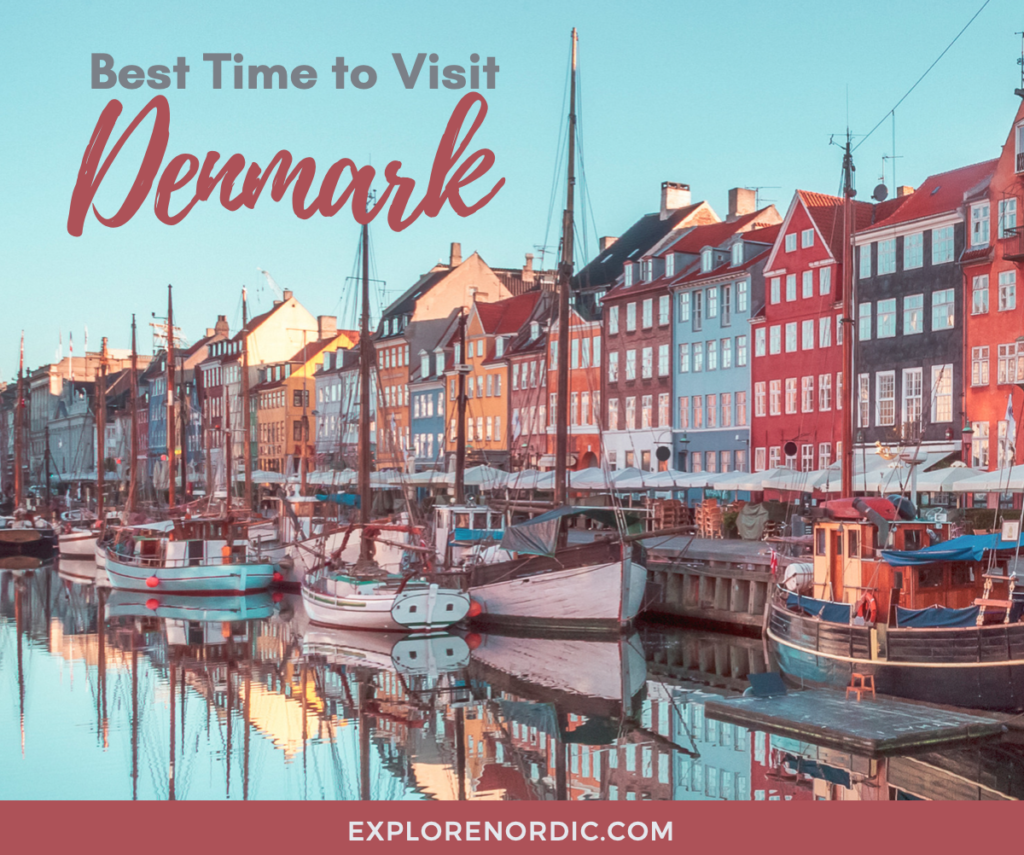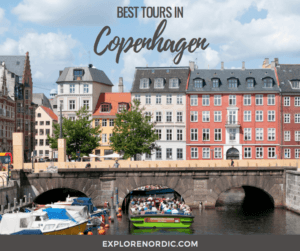When is the Best time to visit Denmark? The best time to visit Denmark depends on your preferences and interests. Denmark has a temperate climate with mild summers and cold winters. The weather and activities may influence your decision.
Overall, I would say that the best time to visit Denmark is during the summer, but if you prefer fewer crowds and cooler weather, the shoulder seasons of spring and autumn can also be excellent times to visit. Let’s dive a little deeper into this topic.
The 4 Seasons in Denmark
Winter & Activities to Enjoy in Denmark
Winter (December to February) in Denmark is the best time to experience the country’s cozy hygge culture by enjoying lots of indoor activities. Other fun winter activities include visiting Christmas markets, trying hot cocoa, and relaxing in a sauna. However, the weather can be cold and dark, with only about 7 hours of daylight in December.
Denmark is not like the other Scandinavian countries with winters piled with snow. Although, they will get some snow in the winter. If you are looking for activities like reindeer safari, husky rides, and northern lights hunts you are better off going further north in Scandinavia.
While Denmark’s winters can be cold and dark, there are still plenty of reasons why you should consider visiting during this season. Here are some reasons to visit Denmark in the winter:
- Christmas markets: Denmark is known for its beautiful Christmas markets, where you can shop for handmade gifts, taste traditional holiday treats, and enjoy the festive atmosphere. Tivoli Gardens puts on a fun Christmas Market well worth a visit.
- Hygge: As mentioned earlier, hygge is a Danish concept of coziness, and it’s especially pronounced during the winter months. You can experience hygge by lighting candles, sitting by a fire, and enjoying hot drinks and comfort food.
- Cultural events: Denmark hosts many cultural events during the winter. The Copenhagen Light Festival, which takes place in February, is a must-see event, with stunning light installations throughout the city.
- Fewer tourists: The winter is the off-season in Denmark, which means you can enjoy the country’s sights and attractions without the summer crowds. You can also take advantage of lower hotel rates during the off-season.
Overall, visiting Denmark in the winter offers a chance to experience the country’s festive holiday spirit, cultural events, and cozy atmosphere.
Spring When Denmark Starts to Blossom
Spring (March to May) is also a good time to visit Denmark. The weather is mild, and there are fewer crowds than in the summer, making it a great time to explore the country’s cultural sites and museums.
Spring is a beautiful time to visit Denmark. Here are some reasons why you should consider visiting Denmark in the spring:
- Cherry blossoms: In April and May, Denmark’s parks and gardens burst into life with cherry blossoms. Copenhagen’s Langelinie Park is one of the best places to see these beautiful pink and white flowers.
- Mild weather: The weather in Denmark is milder in the spring, with average temperatures ranging from 10°C to 15°C. This makes it a great time to explore the cities and countryside without the summer crowds.
- Outdoor activities: In the spring, the countryside of Denmark comes alive with blooming flowers and lush greenery, making it an excellent time to go hiking, cycling, and exploring nature.
- Cultural events: Denmark hosts many cultural events in the spring, including festivals, theater performances, and food fairs. For example, the Copenhagen Cooking & Food Festival takes place in May, featuring local culinary delights.
- Fewer tourists: Spring is considered the shoulder season in Denmark, which means fewer crowds and cheaper accommodation rates compared to the summer months.
Overall, visiting Denmark in the spring offers a chance to experience the country’s natural beauty, cultural events, and outdoor activities without the peak tourist crowds.
Summer – Best Time to Visit Denmark?
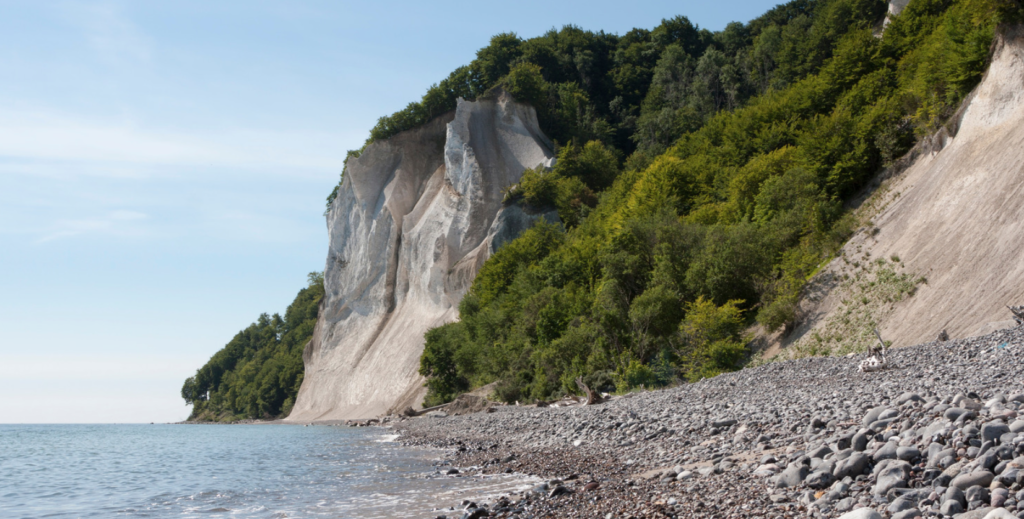
Summer (June to August) is the peak tourist season in Denmark, and it’s the best time to enjoy the beaches, parks, and outdoor activities. The weather is pleasant, and the days are long with up to 18 hours of daylight, making it perfect for exploring the countryside and the cities.
Denmark in the summer is a great time to visit for many reasons. Here are some reasons why you should consider visiting Denmark in the summer:
- Pleasant weather: The summer weather in Denmark is mild, with temperatures ranging from 20-25°C. The days are long, with up to 18 hours of daylight, giving you more time to explore the country.
- Beaches: Denmark has many beautiful beaches, and the summer is the perfect time to enjoy them. You can swim, sunbathe, and enjoy a variety of water sports.
- Outdoor activities: In the summer, Denmark’s countryside comes alive with blooming flowers and greenery, making it an excellent time to go hiking, cycling, and exploring nature.
- Festivals: Denmark hosts many festivals in the summer, including the Roskilde Festival, Northside Festival, and Copenhagen Jazz Festival. You can enjoy live music, food, and other cultural events.
- Summerhouses: Many Danes have summerhouses, and renting one is a great way to experience the Danish lifestyle. You can relax, cook your own meals, and enjoy the peaceful surroundings.
Overall, visiting Denmark in the summer offers a chance to experience the country’s natural beauty, outdoor activities, festivals, and beach culture.
Fall in Denmark
Denmark in the fall is a wonderful time to visit. Here are some reasons why you should consider visiting Denmark in the fall:
- Foliage: Denmark’s forests and countryside are ablaze with color during the fall season. The changing leaves are a stunning sight to see, and you can explore the great outdoors in the cooler weather.
- Harvest festivals: Denmark celebrates its rich agricultural heritage with numerous harvest festivals in the fall. You can find food and drink events, farmers’ markets, and other festivities throughout the country.
- Cultural events: Denmark hosts many cultural events in the fall, including music festivals, film festivals, and other performances. For example, the Aarhus Festival takes place in September and features contemporary art, music, and performances.
- Fewer crowds: The fall is considered the shoulder season in Denmark, which means you can enjoy the country’s sights and attractions without the summer crowds.
Overall, visiting Denmark in the fall offers a chance to experience the country’s natural beauty, cultural events, and cozy atmosphere, without the peak tourist crowds.
Best Time to Visit Copenhagen Denmark
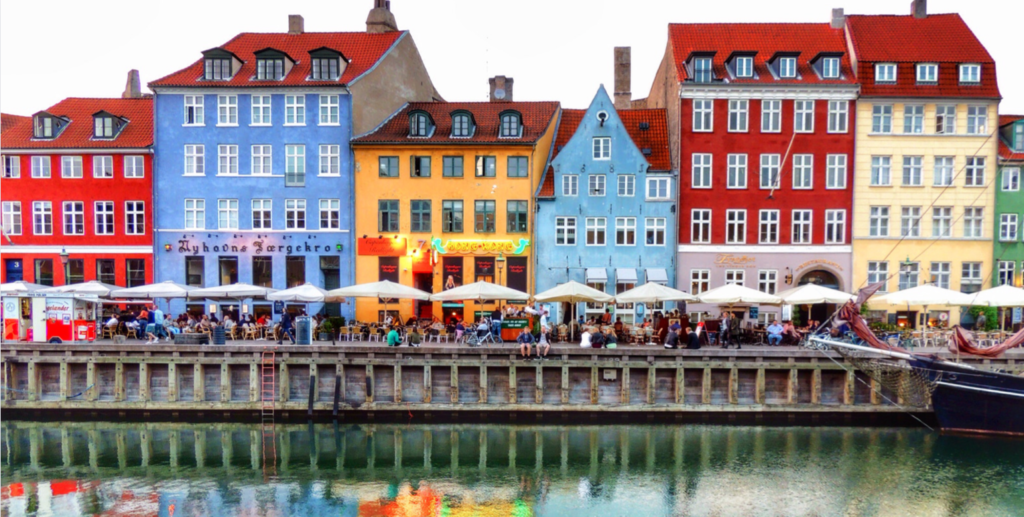
Copenhagen is the capital city of Denmark and is located on the eastern coast of the country. It’s known for its rich history, beautiful architecture, innovative design, and world-class food scene. Some of the top attractions in Copenhagen include the Little Mermaid statue, the colorful Nyhavn waterfront, Tivoli Gardens amusement park, and the Royal Palace.
When to visit Copenhagen depends on what you want to experience. The summer months of June to August are the most popular time to visit, as the weather is usually warm and sunny, and many outdoor festivals and events take place during this time. The city is bustling with activity, and visitors can enjoy the long days exploring the city’s many parks, beaches, canal tours and cultural attractions.
Spring in Copenhagen
Spring, from April to May, is also a beautiful time to visit Copenhagen. The weather is generally mild, and there are fewer crowds than in the summer. Visitors can enjoy the colorful flowers blooming and the days getting longer. It’s a great time to explore the city’s many parks and gardens, and to take part in outdoor activities like biking and hiking.
Copenhagen Winter
Winter, from December to February, can be cold and dark in Copenhagen, but it’s also a magical time with many Christmas markets and festivals taking place throughout the country. Visitors can experience the cozy and festive atmosphere of the city, and enjoy traditional Danish foods like gløgg (mulled wine) and æbleskiver (apple pancakes).
Shoulder Season
Finally, the shoulder seasons of March, October, and November can be a great time to visit Copenhagen. The weather is usually mild, and there are fewer crowds than in the summer. Visitors can enjoy the city’s many museums, galleries, and cultural attractions, and take advantage of lower prices on flights and accommodations. Overall, Copenhagen is a great destination to visit year-round, depending on your interests and preferences.
Danish Cities & Best Time to Visit?
Denmark is a small country with many charming and picturesque destinations outside of Copenhagen that is worth visiting. Here are a few places to consider:
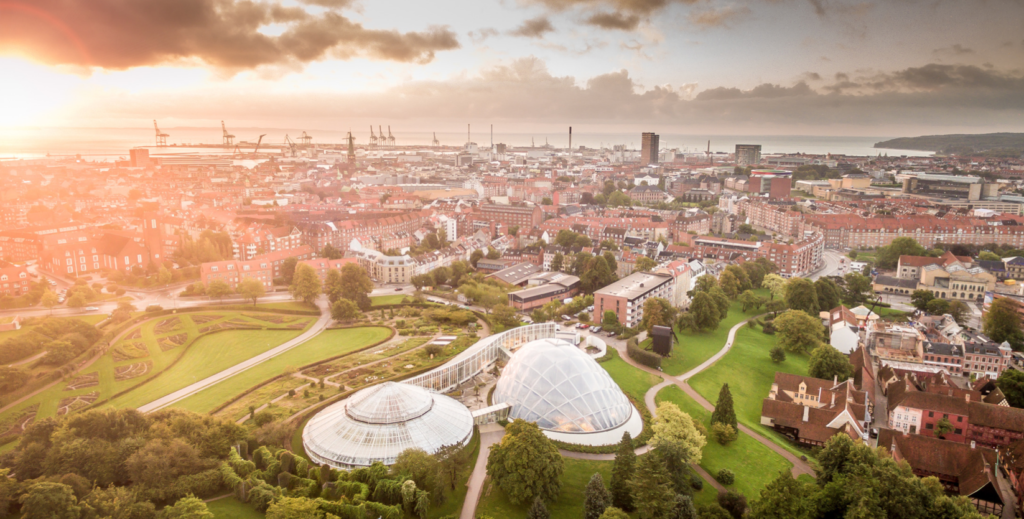
- Aarhus: Aarhus is Denmark’s second-largest city, located on the east coast of Jutland. The city is known for its vibrant cultural scene, including the ARoS Art Museum and the Dokk1 library. Aarhus also has beautiful beaches, charming neighborhoods, and many great restaurants and cafes.
- Skagen: Skagen is a picturesque seaside town located on the northernmost tip of Jutland. It is known for its beautiful sandy beaches, distinctive yellow houses, and lively art scene. Skagen is also home to the Grenen sandbar, where you can stand with one foot in the Skagerrak Sea and the other in the Kattegat Sea.
- Odense: Odense is the third-largest city in Denmark, located on the island of Funen. It is the birthplace of Hans Christian Andersen, and you can visit his childhood home and museum. The city is also known for its beautiful gardens, historic buildings, and lively street markets.
- Ribe: Ribe is Denmark’s oldest town, located on the west coast of Jutland. It is known for its beautiful medieval architecture, including the Ribe Cathedral and the Ribe VikingeCenter. Ribe is also a great place to sample local cuisine, including fresh seafood and traditional Danish dishes.
- Bornholm: Bornholm is a small island located in the Baltic Sea, known for its beautiful beaches, scenic cycling routes, and picturesque fishing villages. The island also has a rich history, with many ancient ruins and medieval churches to explore.
Overall, Denmark has many charming destinations outside of Copenhagen that offer a chance to experience the country’s natural beauty, history, and culture.
Best Time to Visit Denmark – Weather
Denmark has a temperate oceanic climate, with mild temperatures and changeable weather patterns. The weather in Denmark can vary greatly depending on the season and location within the country.
In general, the summer months (June to August) are mild and pleasant, with average temperatures ranging from 20-25°C (68-77°F) and up to 18 hours of daylight. However, rain showers can be frequent. It’s a good idea to pack a raincoat or umbrella.
The fall months (September to November) are generally cooler and wetter, with average temperatures ranging from 10-15°C (50-59°F). The fall foliage in Denmark is beautiful, and it’s a great time to go hiking and enjoy outdoor activities.
The winter months (December to February) are cold, with average temperatures ranging from 0-5°C (32-41°F). Snowfall is common, especially in the northern regions of the country. The days are short, with only 6-8 hours of daylight, and it can be quite dark and gloomy.
The spring months (March to May) are milder than winter, with average temperatures ranging from 5-15°C (41-59°F). The weather can be unpredictable, with sudden rain showers and windy conditions.
Copenhagen Weather

Source: Google.com
Copenhagen has a temperate oceanic climate similar to the rest of Denmark, but due to its location on the east coast of Denmark, it can be slightly milder and drier than other parts of the country.
In the summer months (June to August), Copenhagen is mild and pleasant, with average temperatures ranging from 20-22°C (68-72°F) and up to 17 hours of daylight. However, there can be occasional rain showers.
In the fall months (September to November), Copenhagen is cooler and wetter, with average temperatures ranging from 9-13°C (48-55°F). The fall foliage in Copenhagen is beautiful, and it’s a great time to go for a walk or bike ride.
In the winter months (December to February), Copenhagen is cold, with average temperatures ranging from 0-4°C (32-39°F). Snowfall is common, and the days are short, with only 7-8 hours of daylight.
In the spring months (March to May), Copenhagen is milder than winter, with average temperatures ranging from 4-12°C (39-54°F). The weather can be unpredictable, with occasional rain showers and windy conditions.
Overall, Copenhagen has a relatively mild climate, with temperatures rarely dropping below freezing in the winter and rarely rising above 25°C (77°F) in the summer.
It’s always a good idea to check the weather forecast before traveling and pack accordingly, especially during the winter months when cold temperatures and snowfall can occur. Layers are always a good idea, as the weather can change quickly. Additionally, it’s always a good idea to bring a raincoat or umbrella, regardless of the season.
Overall, if you want to avoid crowds, it’s best to avoid the peak summer months and visit Copenhagen during the shoulder seasons of spring and fall, or during the winter months.
Some Unique Things to Try When You are Visiting Denmark
Denmark has a rich culture and many unique things for visitors to try. Here are some experiences that are worth trying when visiting Denmark:

- Smørrebrød: Smørrebrød is a traditional Danish open-faced sandwich, typically made with rye bread and a variety of toppings, including herring, eggs, and meat. It is a delicious and uniquely Danish food to try.
- Biking: Denmark is a cycling-friendly country, with many dedicated bike lanes and scenic routes. Visitors can rent bikes and explore the country’s countryside and cities on two wheels.
- Danish design: Denmark is known for its sleek and functional design, from furniture to fashion. Visitors can check out the Danish Design Museum or visit shops and markets to purchase unique design pieces.
- Danish pastries: Denmark is also known for its delicious pastries, including the iconic cinnamon bun and the flaky buttery croissant. Visitors can try these treats at local bakeries or cafes.
- Viking history: Denmark has a rich Viking history, and visitors can explore this history at museums and historic sites, such as the Viking Ship Museum in Roskilde and the Ribe VikingeCenter in Ribe.
Overall, Denmark offers many unique experiences that visitors should try, from trying traditional food to exploring the country’s Viking history.


